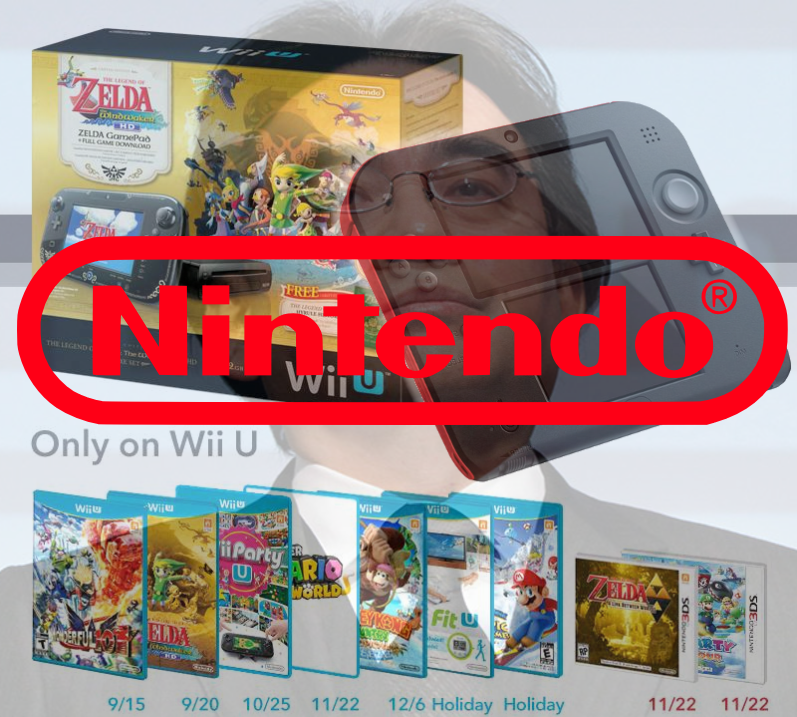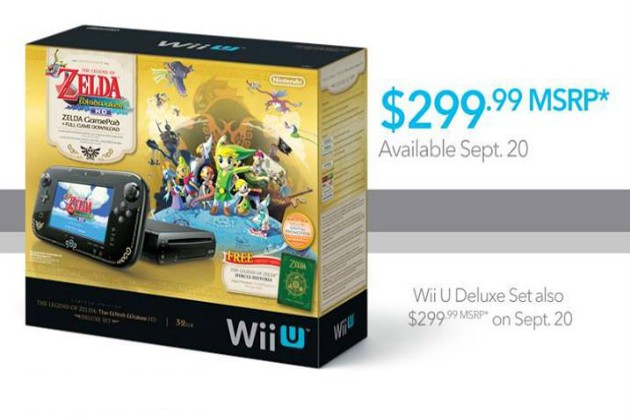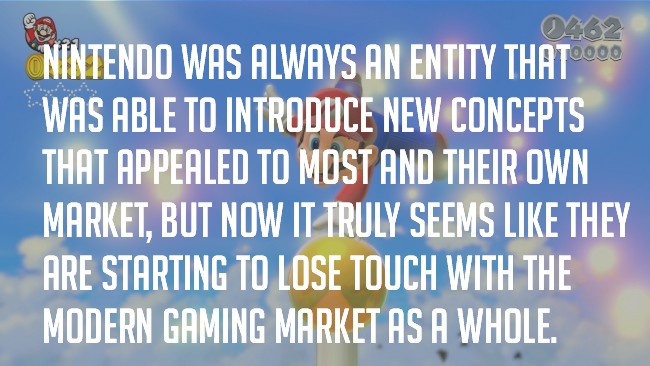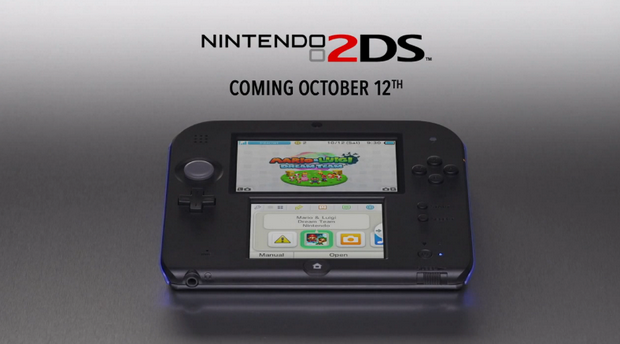
 hether most of us (myself included) want to admit it or not, Nintendo has been flailing on the scene as of late. The lack of compelling Wii U software have gradually influenced the deflation of units sold throughout 2013, and with only the 3DS to shoulder the weight, it’s been a frustrating waiting game for those who have endorsed in the promise of the Big N into the next generation. Nintendo hasn’t been completely deaf to their situation though, and during a press release yesterday, made several announcements towards release dates, price drops, and their newest revision of the 3DS for the budget-minded consumer, or parent…and one has to ask if Nintendo has thought this all the way through?
hether most of us (myself included) want to admit it or not, Nintendo has been flailing on the scene as of late. The lack of compelling Wii U software have gradually influenced the deflation of units sold throughout 2013, and with only the 3DS to shoulder the weight, it’s been a frustrating waiting game for those who have endorsed in the promise of the Big N into the next generation. Nintendo hasn’t been completely deaf to their situation though, and during a press release yesterday, made several announcements towards release dates, price drops, and their newest revision of the 3DS for the budget-minded consumer, or parent…and one has to ask if Nintendo has thought this all the way through?
The way I see it, it seems like it’s just more pandering in disguise, and pandering is one of the biggest factors that lead them down to this path to begin with.
 The more evident trend among the announcement from the Japanese gaming giant were the price drops, and while the price of admission makes sense for the 2DS, it doesn’t seem like the reduction will help the latter of its hole the way the Big N is betting that it will. Now I know that the last statement you just read may have come off to be silly as shit, but just stick with me here because I there’s a key element that I want to illustrate; a lower price may potentially attract a higher consumer adoption, but a Wii U price drop is mostly superfluous in the grand scheme of things. Ultimately, there are more pressing concerns involved with the little box that take more precedence than its price.
The more evident trend among the announcement from the Japanese gaming giant were the price drops, and while the price of admission makes sense for the 2DS, it doesn’t seem like the reduction will help the latter of its hole the way the Big N is betting that it will. Now I know that the last statement you just read may have come off to be silly as shit, but just stick with me here because I there’s a key element that I want to illustrate; a lower price may potentially attract a higher consumer adoption, but a Wii U price drop is mostly superfluous in the grand scheme of things. Ultimately, there are more pressing concerns involved with the little box that take more precedence than its price.
The decrease in value carries the potential of coaxing more support from third-party developers into supporting the system again like EA and Ubisoft sure, but more of the issues that hold back the platform are more inherent. The Online infrastructure has gradually revealed itself to be one of the most primitive interfaces and systems in the console market (second only to the Ouya.)
Between the concept of rooting in and out arbitrary menus in order to accomplish the simplest things like chatting or gaming to the complete lack of unity between the 3DS and Wii U eShop (opposite to the effect of Sony’s approach with the Vita), let alone a coherent accounting system to manage it all is where Nintendo’s resources need to be allocated and this price drops may move units but it can sink them just the same. Going into the next generation, the Wii U already had the advantage of being the most cost-friendly among its peers, and at even at the previous rate, the platform was selling at a loss with each unit sold—a $387 million worth to be exact. Third parties are waning, but the latest crop of Wii U exclusives, as exciting as some of them may sound, deliver more of the same “Nintendo” magic we’ve seen and what’s even more distressing is that none of it does anything particularly unique with the main selling point of the console—the Gamepad.

Super Mario 3D World will be a spiritual successor to one of the best Mario games out there, but we’re now in a generation that’s saturated with Mario. Wind Waker may stand as one of the best Zelda entries in the series but it's majorily a graphical facelift with hardly any additions involving the Gamepad, (and yet they boasted that they made the Triforce hunting easier folks, lets keep be sure to celebrate that no shall we?) Donkey Kong Country Tropical Freeze is almost too faithful of a sequel and is shaping out to be more like a glorified expansion. Wii U Party holds out for hope that we’ll get software that makes the Gamepad fun again, but we’ve seen what the unique controller can do in small bursts, where’s the imagination towards something with a larger scope? We unfortunately haven’t seen any, and more alarmingly, haven’t even seen an indication of it, instead, we know that will be able to honk our horn from the touch screen when we play Mario Kart 8 sometime next year.
While it sounds like Nintendo may continue to fumble their approach with properly utilizing the hardware in the Wii U to appeal to gamers this Holiday, it looks like they’re intentionally doing it with 3DS in a new revision that sounds like brilliance on the surface, may potentially house a whole lot of disaster when you scratch away at it.
The Nintendo 2DS; a variant of the 3DS format that completely does away with the 3D stereoscopic display, and is designed with a more tablet-like construct that will play all of the existing 3DS and DS library for $129.99—again, the potential of the idea is mishandled in its execution. Nintendo is continuing their fight to properly market the brand identification to the unsavy consumers who can’t make the distinction between a Wii U and a Wii, they’ve now positioned themselves in marketing a revision to market with a name implies that it was a predecessor—in the video game industry, there’s a lot of significance to a name unlike a certain Shakespeare play would suggest. Here’s the break down—3DS, DS, DSi games will work on the 2DS and 3DS without there being a specified format or software branding for the 2DS, imagine the confusion among parents and casual players in the wild who will try to wrap their head around such a concept. The design of the console is aimed towards appealing to the tablet-demographic with the right intentions but the DS was and never will be a tablet.

The wedge design may emulate the tablet shape as it forgoes the hinge that would give it a fold, which in actuality houses one giant screen that’s segmented into two, but the architecture of the interface appear to be counterintuitive to what the portable’s design implies. The ergonomics that demand precision between buttons and touch screen appear troublesome at first glance, the other concern lies in the real estate of the unit itself, and yet the screen size is the same of the original 3DS, not the XL. The concept of a cheaper 3DS that’s child friendly (questionably more durable) is an ingenious move from the Big N, especially when they’re supported by their position in the handheld market, but the revision lacks any of the innovations that make it seem like a worthwhile endeavor like say the Gameboy Advance SP for example.
What we have is a bulkier, slightly clumsier design that’s scaled back in functionality in comparison to its counterparts with no improvements of note like a more responsive mutli-touch screen versus a single-touch screen for example, that ends up being just as arbitrary as some of the company’s other revisions like the Wii Mini and the Gameboy Micro.
Hardware doesn’t push hardware, games do, and while that’s still a matter of debate for Nintendo’s flagship systems, the course of action we’ve seen so far is muddled and, a bit worrisome for that matter. Nintendo was always an entity that was able to introduce new concepts that appealed to most and their own market, creating their own “Nintendo Demographic” if you will, but now it truly seems like they are starting to lose touch with the modern gaming market in general. With no attention towards their bungled messaging and marketing or any action towards existing issues, these price drops and revisions only exist as a temporary Band-Aid and the bleeding doesn’t appear to be stopping anytime soon.